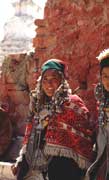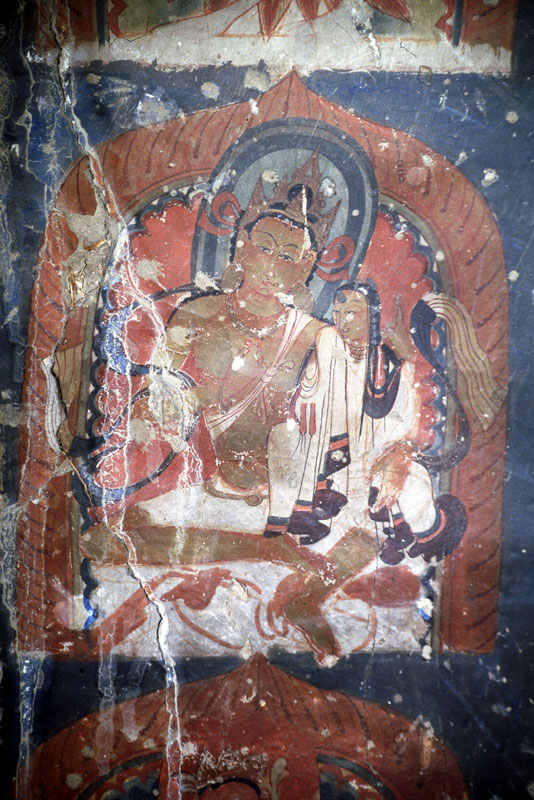Research
- Research Ass. Mag. Christiane Papa-Kalantari
The Nako paintings are important as documents of material
culture in their depictions of architecture, donors, costumes, and
textile motifs. The ornament of the exquisite textile depictions on
the ceilings and in the wall paintings can be related to the art of Tabo
during the Renovation Phase (1042), and to the newly excavated mChod-rten
in Tholing (mTho-gling, today within the borders of Chinese Tibet) from
the same period, as well as to the Dung-dkar caves (around 1200, Chinese
Tibet). Some of the panels show depictions of printed cotton cloths and
luxurious textiles like silk brocades.
The great variety of textile
depictions and their careful rendering provide evidence of the use
of sumptuous garments in the dressing of Buddhist temples, as well
as the cultural and economic transfers along the trade routes. These
features in the art of Nako clearly indicate the regional impact of
the rich and diverse Western Tibetan culture. The study of ornaments - subject of this authorís ongoing research ( see overview of research interests on the FSP-homepage) - provides a vast material for the analysis of cultural transmission in terms of motifs and surface patterns. However, there exists a wide range of varieties of ornamental language in the Western Himalayan region which differs profoundly in function, meaning as well as aesthetic values.
A future task of
collaborative and interdisciplinary investigations will be to
reconstruct the process of adaptation of the Kashmiri, North-West Indian,
and Central Asian traditions to the unique needs of the newly founded
Buddhist monasteries and their Tibetan patrons in the Western Himalaya.
Ass. Mag. Christiane Papa-Kalantari

